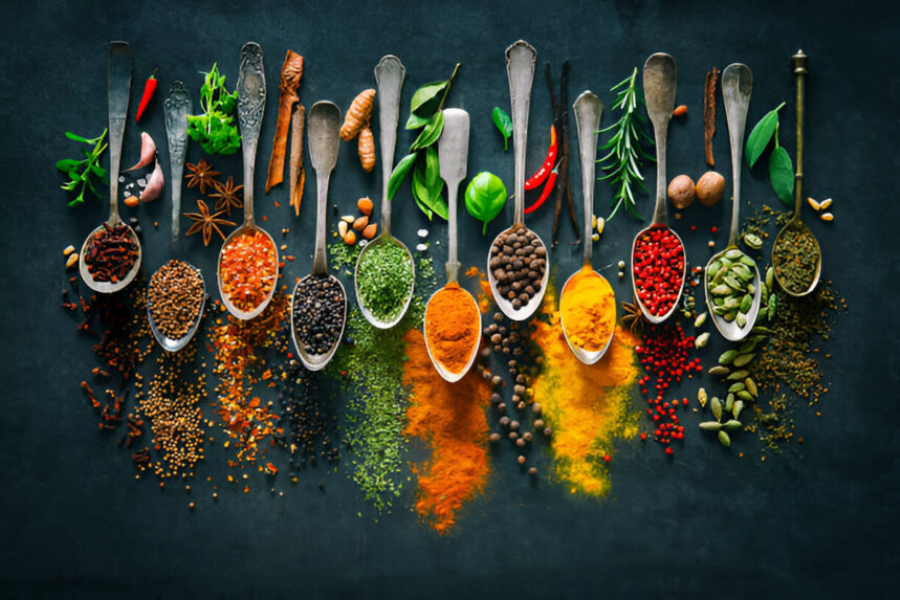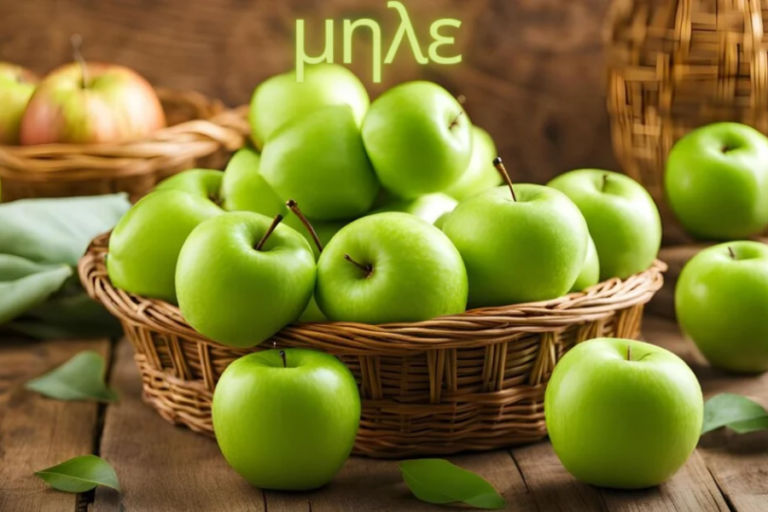Maslaaseen: A Traditional Middle Eastern Dish
Step into the vibrant and aromatic world of Middle Eastern cuisine with Maslaaseen, a traditional dish that perfectly captures the essence of the region’s rich culinary heritage. This flavorful, comforting dish has evolved over centuries, bringing families together at the dinner table and becoming a beloved staple across the Middle East. In this article, we will explore the history, ingredients, cooking process, regional variations, health benefits, and how to enjoy this remarkable dish.
The History and Origin of Maslaaseen
Maslaaseen is a dish deeply rooted in Middle Eastern culture, with origins tracing back centuries to the Levant region, which includes countries like Lebanon, Syria, Jordan, and Palestine. Though the exact history of Maslaaseen is somewhat mysterious, it is widely accepted that it began as a simple, hearty meal for common people. Over time, its significance grew, and it became a dish often prepared for festive occasions and family gatherings.
Different families and regions have added their own unique twists to Maslaaseen, reflecting the diversity of Middle Eastern cuisine. Despite these regional adaptations, the dish has maintained its core essence— a savory, stew-like meal brimming with flavorful spices, vegetables, and either lamb, chicken, or beef. What remains consistent is Maslaaseen’s ability to bring warmth and joy to households across the Middle East and beyond, making it a cherished comfort food with a long-standing tradition.
Ingredients Used in Maslaaseen
One of the reasons Maslaaseen has endured over centuries is its use of simple, readily available ingredients that, when combined, create a symphony of flavors. The key components of this dish typically include:
- Lamb or Chicken: The choice of protein varies based on preference and regional customs. Both meats are tender and soak up the rich flavors of the spices.
- Spices: Traditional Middle Eastern spices are central to Maslaaseen’s distinctive taste. Spices like cumin, coriander, cinnamon, and paprika are commonly used to add depth and warmth to the dish.
- Vegetables: Fresh vegetables such as tomatoes, onions, and bell peppers form the base of the stew, providing a natural sweetness that balances the robust flavors of the spices.
- Garlic and Olive Oil: Essential ingredients that add complexity and richness to the dish, olive oil is often used to sauté the vegetables, while garlic gives a pungent yet aromatic quality.
- Lemon Juice: A touch of lemon juice brightens the dish, offering a refreshing zing that complements the earthy spices.
- Chickpeas or Nuts (optional): Some variations include chickpeas or nuts like almonds or pine nuts for added texture and heartiness.
This combination of ingredients creates a meal that is both flavorful and aromatic, with each element contributing to a savory, stew-like consistency that is hearty and satisfying.
The Cooking Process
Cooking Maslaaseen is a labor of love, with each step designed to bring out the rich flavors of the ingredients. Here is a general overview of how Maslaaseen is prepared:
- Sautéing the Onions: Begin by heating olive oil in a large pan or pot. Add chopped onions and sauté them until they become soft and translucent, releasing their sweetness.
- Browning the Meat: Once the onions are fragrant, add the lamb or chicken (or beef, depending on your choice) to the pan. Cook the meat until it is browned on all sides. This step helps seal in the flavors of the meat and creates a rich base for the dish.
- Adding Spices and Vegetables: Next, add the spices—cumin, coriander, paprika, cinnamon—and stir them into the meat. After the spices have bloomed and become aromatic, toss in the diced tomatoes, bell peppers, and any other vegetables you are using.
- Creating the Stew Base: Pour in water or broth along with a bit of tomato paste to create the base of the stew. Bring the mixture to a simmer and allow it to cook slowly over low heat. The longer the stew simmers, the more the flavors will meld together, creating a cohesive and richly flavored dish.
- Final Touches: Once the meat is tender and the sauce has thickened, finish the dish with a squeeze of fresh lemon juice and a sprinkle of fresh herbs like parsley or cilantro. This adds a final layer of brightness and freshness to the hearty stew.
- Serving: Maslaaseen is traditionally served hot, either with fluffy rice or warm pita bread, allowing you to scoop up the rich stew and savor every bite.
Variations of Maslaaseen Across the Middle East
As with many traditional dishes, Maslaaseen has evolved and adapted to suit regional tastes across the Middle East. While the essence of the dish remains the same, the ingredients and methods of preparation can vary:
- Lebanon: In Lebanon, Maslaaseen is often prepared with ground lamb or beef, simmered in a rich, tomato-based sauce. It’s commonly served with rice or flatbread, making it a hearty and satisfying meal.
- Jordan: Jordanian Maslaaseen is known for its spicier flavor profile. Cumin, coriander, and a touch of chili are used to give the dish a bold kick. It’s typically served with pickled vegetables and yogurt, which balances the spiciness and adds a cooling contrast.
- Palestine: In Palestine, Maslaaseen may include chickpeas or eggplant, which add texture and enhance the dish’s depth of flavor. Olive oil is used generously, contributing a rich, fruity undertone to the meal.
- Syria and Iraq: In these regions, Maslaaseen takes on a tangier flavor due to the inclusion of pomegranate molasses or sumac, which lend a unique sour note. This variation offers a delightful contrast to the earthy spices and savory meat, making it stand out from other versions.
Each region brings its own cultural influences to Maslaaseen, but the dish remains a symbol of warmth, comfort, and togetherness throughout the Middle East.
Health Benefits of Maslaaseen
Beyond its delightful flavors, Maslaaseen is a dish packed with nutritional benefits. Its ingredients provide a variety of vitamins and minerals that support overall health and well-being. Some of the key health benefits include:
- Rich in Antioxidants: Many of the vegetables and spices used in Maslaaseen, such as tomatoes, garlic, and cumin, are rich in antioxidants. These compounds help fight inflammation and protect the body from oxidative stress.
- Heart-Healthy: Maslaaseen is naturally low in saturated fats and cholesterol, especially when prepared with olive oil. The healthy fats found in olive oil are beneficial for heart health, helping to reduce bad cholesterol levels.
- High in Fiber: If the dish includes chickpeas or vegetables like eggplant, it becomes an excellent source of dietary fiber. Fiber aids digestion and promotes gut health, while also helping with weight management by keeping you feeling full longer.
- Protein-Packed: The inclusion of lamb, chicken, or beef provides a good source of protein, essential for muscle repair and growth. Protein also plays a vital role in maintaining healthy skin, hair, and nails.
By combining these wholesome ingredients with nutrient-rich spices, Maslaaseen is not only delicious but also nourishing, making it an ideal meal for those looking to enjoy a healthy, balanced diet.
How to Enjoy Maslaaseen
Maslaaseen can be enjoyed in various ways, making it a versatile dish suitable for both casual meals and special occasions. Here are some suggestions for how to savor it:
- With Pita Bread or Rice: One of the most traditional ways to enjoy Maslaaseen is by pairing it with warm pita bread or fluffy rice. The bread or rice acts as the perfect vehicle for soaking up the rich, flavorful stew.
- As Part of a Mezze Spread: For those who enjoy variety, Maslaaseen can be served alongside other Middle Eastern dishes in a mezze spread. Accompany it with hummus, tabbouleh, or falafel for a well-rounded and satisfying meal.
- Garnished with Fresh Herbs: Adding a sprinkle of chopped parsley or cilantro not only enhances the dish’s presentation but also adds a burst of fresh flavor that complements the savory stew.
- With a Side Salad: For a lighter meal, serve Maslaaseen with a crisp green salad drizzled with lemon juice and olive oil. The tangy, refreshing salad provides a nice contrast to the rich, comforting stew.
No matter how you choose to enjoy Maslaaseen, the key is to take your time and savor the rich blend of spices, tender meat, and hearty vegetables.
Conclusion
Maslaaseen is a timeless dish that has earned its place as a beloved staple in Middle Eastern cuisine. Its rich history, diverse regional variations, and health benefits make it a culinary gem that continues to captivate food lovers around the world. Whether served as a comforting family meal or part of a larger spread, Maslaaseen offers a taste of the Middle East’s culinary heritage with every bite. So, next time you’re looking to explore new flavors, embrace the delightful experience of Maslaaseen, a dish that is as nourishing as it is flavorful.






